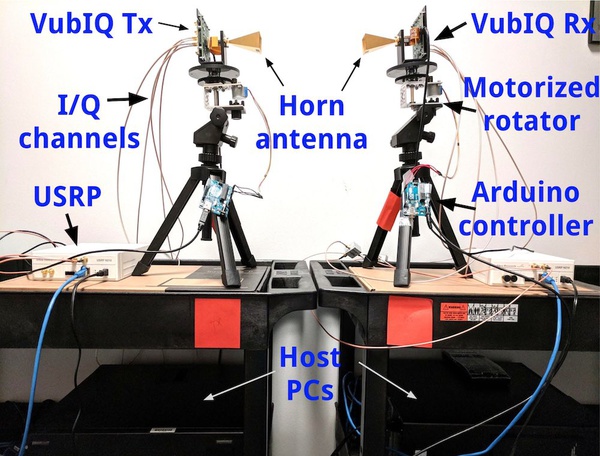
Intelligent high frequency wireless networks for next generation communication.
by Shivani Puli
A new study researching millimeter wave networks has investigated an alternate wireless local area network (WLAN) that could be used in the future of wireless communication. Researchers Ding Zhang and Parth Pathak propose the use of joint transmissions in 60 Ghz mmWave WLAN. The implementation of this high frequency WLAN could be the future of wireless communication.
The WLANs we currently use such as wifi are on the 2.4 GHz and 5 GHz band. There are two main problems with these networks. Wifi is being used more and more to watch videos, make phone calls, etc. This is increasing mobile traffic tremendously, which cannot be supported by the 2.4 GHz and 5 GHz bands.
The second reason is that the current WLANs cannot support a high data rate. The data rate of these low frequency networks is below ten-to-hundreds of megabits per second. However, for more advanced applications such as virtual reality or higher resolution video streaming, a higher data rate is needed which current wifi cannot support. Switching to a higher frequency millimeter-wave (mmWave) network is proposed as the foundation of the next generation communication.
A mmWave network works between 30 to 300 GHz. Switching to this larger bandwidth will expand the data rate up to 10 gigabits per second. This network will help solve the problem of transmitting huge amount of mobile traffic because it will be able to provide for a higher amount of data rate. However, before bringing this technology into the global market, there are many challenges that need to be overcome.
With this high frequency comes an increased attenuation. The amplitude of the signal decreases significantly with the distance and cannot penetrate physical objects like wifi and bluetooth can. The increase in blockages is a major problem because a signal can be intercepted by the human body. Ding Zhang proposes joint transmission as a solution to this problem. An innovative algorithm using joint transmission is proposed to coordinate multiple access points to overcome the blockages and improve the network throughput in mmWave WLAN.
High frequency WLANs have endless implementations for the future. This kind of WLAN is perfect for small areas with a large number of clients. For example, a crowded football stadium would benefit greatly from the use of 60 GHz mmWave WLAN. Low frequency networks like wifi are problematic because the high mobile traffic demand and interference between electronics would slow down the data rate of each user. This may even prevent all users from accessing the network. Instead, if multiple access points with intelligent control algorithm for the 60 GHz network were placed on the roof of the stadium, the higher data rate would allow all users to get access to the network simultaneously without interfering with one another.
Another use for the 60 GHz network is self-driving cars. A 60 GHz transceiver can be placed on the car and make real-time control and traffic scheduling possible. This network can also be used for advanced technology such as virtual reality that requires a high data rate. Most virtual reality devices are wired because our current wireless network cannot support the high data rate needed by virtual reality. A high frequency WLAN could enable virtual reality devices to become wireless.
